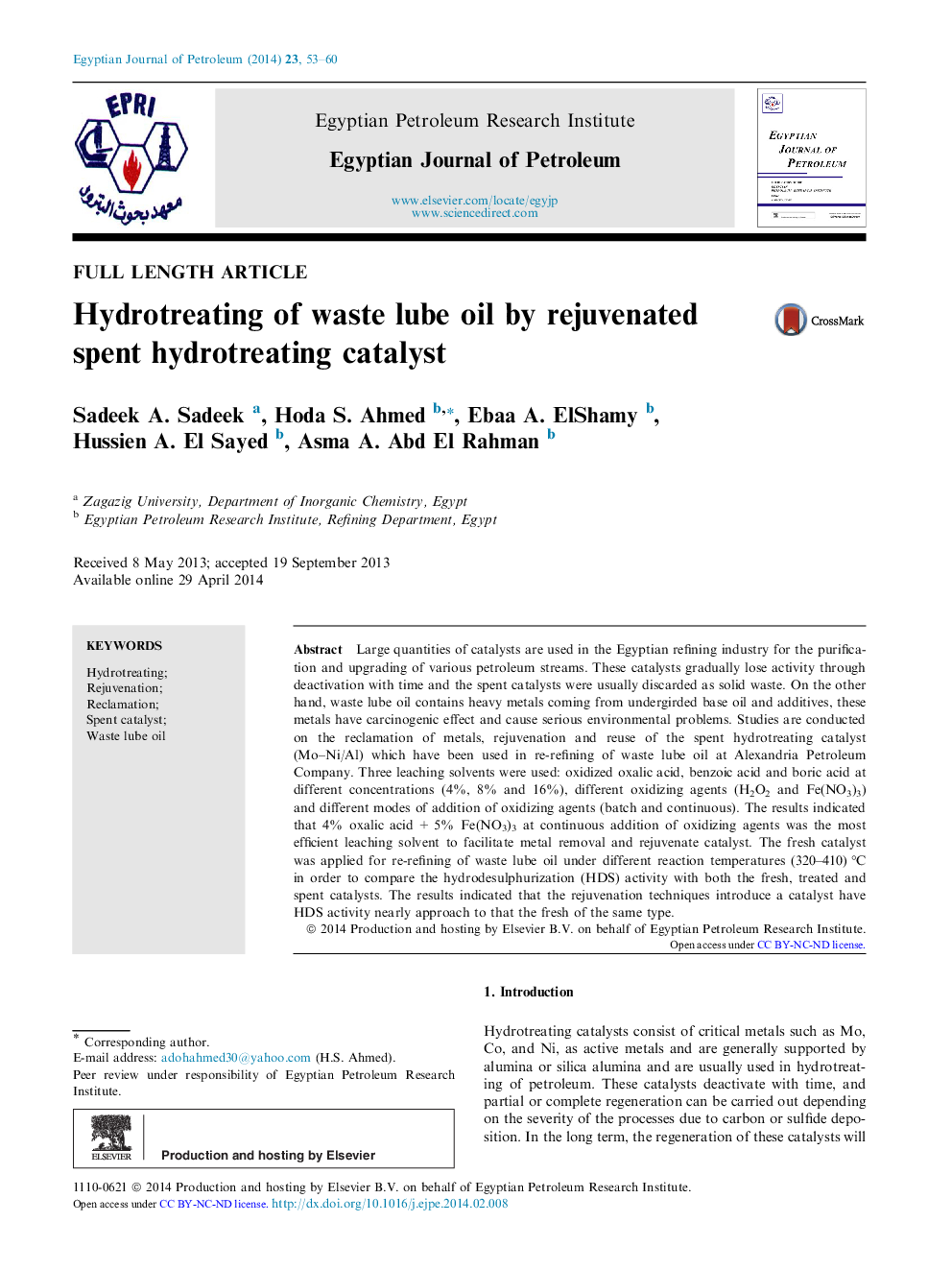| Article ID | Journal | Published Year | Pages | File Type |
|---|---|---|---|---|
| 1756892 | Egyptian Journal of Petroleum | 2014 | 8 Pages |
Large quantities of catalysts are used in the Egyptian refining industry for the purification and upgrading of various petroleum streams. These catalysts gradually lose activity through deactivation with time and the spent catalysts were usually discarded as solid waste. On the other hand, waste lube oil contains heavy metals coming from undergirded base oil and additives, these metals have carcinogenic effect and cause serious environmental problems. Studies are conducted on the reclamation of metals, rejuvenation and reuse of the spent hydrotreating catalyst (Mo–Ni/Al) which have been used in re-refining of waste lube oil at Alexandria Petroleum Company. Three leaching solvents were used: oxidized oxalic acid, benzoic acid and boric acid at different concentrations (4%, 8% and 16%), different oxidizing agents (H2O2 and Fe(NO3)3) and different modes of addition of oxidizing agents (batch and continuous). The results indicated that 4% oxalic acid + 5% Fe(NO3)3 at continuous addition of oxidizing agents was the most efficient leaching solvent to facilitate metal removal and rejuvenate catalyst. The fresh catalyst was applied for re-refining of waste lube oil under different reaction temperatures (320–410) °C in order to compare the hydrodesulphurization (HDS) activity with both the fresh, treated and spent catalysts. The results indicated that the rejuvenation techniques introduce a catalyst have HDS activity nearly approach to that the fresh of the same type.
